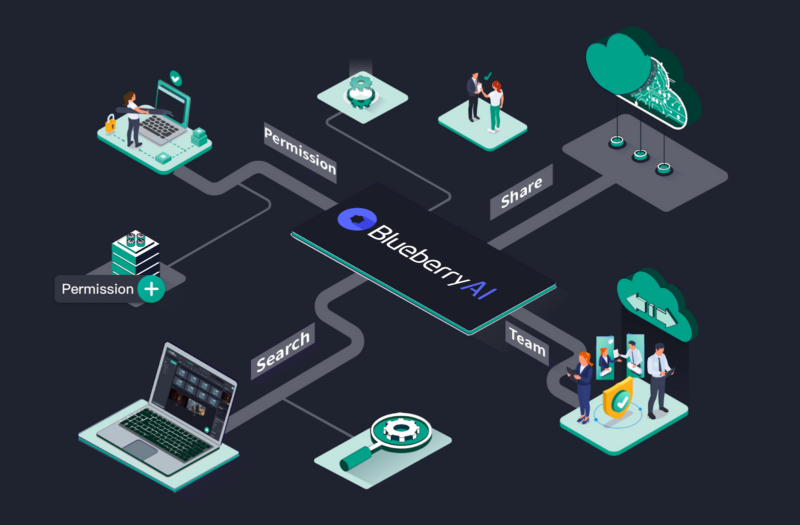
“It’s not that I’m so smart, it’s just that I stay with problems longer.” – Albert Einstein.
Crafting the ideal IT resume can be like unraveling a complex puzzle; it requires persistence, thorough attention to detail, and an effective plan. By reading an domyessay review, you may have discovered the value of presentation in any type of writing – be it essays or resumes. With such an enormous pool of candidates in IT today, standing out among them can be a daunting task. Let’s discover how you can navigate this challenge.
Understanding the IT Landscape
Before delving deeper into your resume, it is crucial that you gain an understanding of IT as a field. It encompasses much more than software development and data analysis. It stretches from cybersecurity and network management all the way to software testing services and network monitoring.
To create an impressive resume, it’s crucial to identify where your passion and expertise lie. Do you excel in front-end development, system architectures, or another field entirely? Identifying your specialization will give your resume clear direction and purpose.
Staying current with IT trends will give you an advantage, so familiarizing yourself with emerging technologies and methodologies is also essential to staying ahead. Not only will it add substance to your resume, but it will demonstrate commitment to continuous learning as well.
Highlight Relevant Skills and Experiences
While academic achievements and grades certainly play a part, IT skills and hands-on experience typically take center stage when hiring for IT roles. Potential employers want to know exactly what you can do versus just reading about academic achievements or grades alone.
Start by listing all of the programming languages and software applications you are proficient with, as well as any IT projects, both academic and personal, you have completed. Focus on challenges encountered, solutions implemented, and results achieved – this narrative approach not only gives context but also highlights your problem-solving abilities.
Quality over quantity is key when applying for jobs. Instead of listing every detail that might apply, emphasize those experiences and skills most relevant to your chosen position.
Crafting an Engaging Personal Statement
An appealing personal statement or summary at the start of your resume is critical in setting the right impression about who you are as an IT professional, your goals and achievements, and what unique skills or experience you bring.

This section should showcase you as an individual IT specialist while outlining any key benefits they bring to an employer or recruiter.
Consider your opening statement like an elevator pitch: engaging, concise, and tailored specifically to the position you are seeking. Emphasize what makes you unique while outlining why joining the team would benefit all involved.
Navigating the “Essaypro Assessment” Approach
One intriguing approach when creating your IT resume should be applying the principles of essay writing. After all, both narratives tell a similar tale: yours! Platforms like Essaypro Review place great importance on structure, clarity, and relevancy as essay components; thus, these principles can easily be implemented into resume writing as well.
Make sure that your resume has a logical structure. Begin with personal details, followed by an optional personal statement, then present skills, experiences, and education details in a concise fashion without unnecessary jargon. Clarity should always be prioritized.
Deciphering Technical Jargon
Within IT, the temptation to embellish your resume with technical terms may be great. While you might believe this makes you seem more knowledgeable, this often has the opposite effect.
Let’s be realistic; while most hiring managers in IT companies have technical backgrounds, some may not understand every technical term or buzzword used on resumes. Instead of overwhelming your resume with unnecessary terminology and buzzwords, try making it universally understandable so a layperson can grasp your qualifications and achievements easily.
Remember, the essence of communication isn’t what you say but rather how others understand. The most impressive writing is the one that expresses complex ideas clearly and concisely. Apply this same philosophy to your resume by being straightforward with technical terms while offering brief explanations or context when necessary.
Customize It to Each Job Description
A one-size-fits-all approach may work in some instances, but certainly not when it comes to IT resumes. Each position you apply for could have specific requirements and desired skills that make each application distinct; rather than sending out one resume after another to different employers, tailor each application’s resume specifically according to each job posting’s description.
Analyze the job listing carefully to identify key terms and requirements, then tailor your resume to address these. If a company is seeking expertise in cloud computing, your experience in this area should stand out on your resume – this shows your strong suitability for their specific role while simultaneously showing interest in it!
Source: https://www.pexels.com/photo/woman-holding-a-clipboard-with-resume-5989941/
Implement Feedback and Continuous Refinement
Like software updates, resume iterations are important. If the response rate to your resume submission falls short of expectations, take this as an opportunity to revisit and revise it accordingly.

Get feedback. Getting input from other students or mentors may offer new perspectives. In other words, the process should look something like this: draft, seek feedback, refine, and repeat until your resume becomes stellar! The same iterative approach can make a good resume into an extraordinary one.
Hard and Soft Skills in IT
While hard skills like coding or database administration are invaluable in IT, soft skills such as teamwork, communication skills, or problem-solving ability can set you apart.
Consider dedicating a section of your resume to these experiences. Perhaps you led a team project during your studies or resolved an issue at a hackathon – these experiences, which are not exclusively technical, can demonstrate qualities that are invaluable in professional environments.
Online Presence and Portfolio
Employers increasingly search the web for potential candidates. Your online presence should serve as an extension of your resume; include all links and content created online, such as blogs, contributions to forums, or GitHub repositories, in your resume to demonstrate you have done something impressive online.
An online portfolio can be particularly helpful if you work in web development or UI/UX design, providing tangible evidence of your skills to prospective employers as well as showing initiative and dedication towards your field.
Final Thoughts
Crafting the ideal IT resume doesn’t involve listing everything you have ever accomplished; rather, it requires selecting only what’s most relevant and doing so in a compelling fashion. Your resume serves as the first impression for potential employers – reflecting professionalism, skills, and a passion for IT as a reflection of you as an individual.
If you want to enhance the refinement of your resume or explore similarities between essays and resumes, Google search “essaypro review” for expert insight and guidance. Every effort invested into perfecting your resume brings you one step closer to landing the IT job of your dreams!











